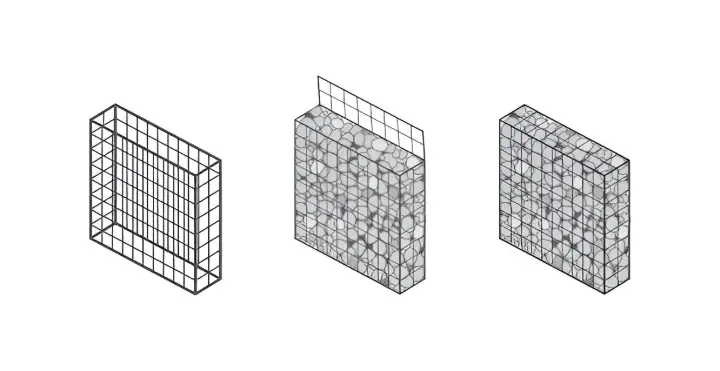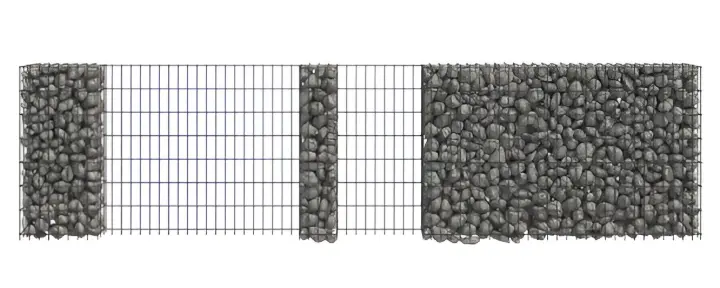The retaining wall is a structure that is used to withstand the lateral soil as well as erosion or washing away in rugged terrain. It is widely applied in the gardening of homes, business open spaces, and while constructing buildings or other buildings where the height changes should be restrained. A major example of the most popular types is the concrete block retaining wall which is strong, cheap, and stylish. Regardless of whether you have a slope in the backyard or are building a raised garden bed, you may want to check out what an effective retaining wall can do to the outdoor design. For more ideas, see our blog on Retaining Wall Fire Pit Ideas.

What is a Concrete block Retaining wall?
Pre-cast interlocking blocks are used and placed one on top of the other to form a concrete block retaining wall by making use of mortar. Such blocks are manufactured to be fixed on the ground, forming the construction, which can safely withstand the pressure of soil and weather phenomena. These blocks of concrete wall are also of different sizes and texture, which enables the homeowner and the professionals to pick the aesthetics to meet performance. When it comes to cost savings, people resort to cheap retaining wall blocks, which are highly cost savvy, and for quality and consistency, people resort to the brand that is known and tested like the Lowe retaining wall blocks. You can also compare with our article onBuilding Gabion Retaining Walls
They are the walls that are likely to be constructed either with the help of gravity or reinforced wall systems. Gravity walls place the load of the wall upon the weight of the blocks they are composed of to resist the soil in front of it whilst the reinforced systems employ the geogrid or other support to hold back the soil against the walls. In these two examples, retaining wall blocks will offer durability that will last long and a clean and modular appearance.

How to Build a Concrete Block Retaining Wall
Planning and marking
You should have a plan before you start constructing your retaining wall. Select the most appropriate spot and just find out the necessary height of the wall in relation to slope and purpose. Use stakes and a string to lay out the layout of the wall. This is the point where you want to pay attention to local building codes, which can impose a height limit, or drainage guidelines that you will have to comply with. For more on this, check our post about Gabion Wall Drainage Solutions
Digging Out the Trench
After identifying your layout, you may start digging the ditch. It ought to measure around 6 to 8 inches deep and also about two times the size of retaining wall blocks you will be using. This gets to leave space where there can be a solid flat foundation. At this stage, it is essential to make sure that the base is straight, it will affect the wall stability as a whole.
Establishing a Good Base
4 to 6 inches of crushed gravel then should be poured on the trench to form a firm base. This gravel is then to be beaten hard so that the drainage can be properly maintained and also the blocks can have a good foundation. The base is to be made as compact as possible because this will guarantee no shifting or settling of the wall that might occur with time.
First Course Laid on to the Ground
Start the first work of laying down the blocks. A level should be used to ensure that each block is straight so that it is well policed. A rubber mallet should make it easier to tap the blocks in place so that they are not damaged. The most crucial one is this first course since it determines how straight and strong the rest of this wall will be.
Backfilling, and Stacking
Stack further the blocks of the retaining wall in brick-like staggered pattern to enhance stability. Once rows are placed, space to the back of the wall is backfilled with gravel, and the ground is compacted. In case your wall is more than 2 feet, then you can incorporate a drainage pipe behind the bottom layer to help discard the pressure of water which may lead to negativity of the wall with time. see our article on Erosion Control with Gabion Structures
Finishing
Capstones are placed on the top of a row to give a finishing touch to your roof, it will look like a professional. This is fastened through the use of concrete adhesive. Lastly, fill the back and top of the wall area with soil, mulch or decorative stone according to your landscaping plan. Not only does this finish the appearance but aids in moisture control, as well as supporting plants.
Applications using Retaining Walls
Some purposes of use of retaining walls in homes and business places include:
- Making gardens terraces and flower beds
- Retaining soil in driveways or walks
- Staking of slopes in the backyards or patios
- Enhance the movement of water and prevention of washouts
- Improvement in landscape architecture
Overview of Concrete Block Retaining Wall Construction
| Feature | Description |
|---|---|
| Material | Concrete wall blocks, retaining wall blocks |
| Best Use | Slopes, garden beds, driveways, erosion control |
| Installation | DIY-friendly under 3 ft, professional above 3 ft |
| Cost Options | Cheap retaining wall blocks to premium brand blocks |
| Available At | Lowe’s, hardware stores, local suppliers |
| Maintenance | Minimal; occasional cleaning and inspections |
The Reason Why Hitech Gabion Is an Intelligent Option
Though the use of concrete block retaining walls is solid and practical, Hitech Gabion is more intelligent and versatile, prescribing the use of galvanized wire covered with stones, forming a series of rectangular boxes in the form of a tower. The walls can be used as a source of strength as well as great quality of drainage, flexible and friendly to the environment.
- Built for Saudi Arabia's harsh climate
- Eco-friendly and corrosion-resistant
- Natural look blends with the environment
- Faster to install than traditional block walls
- Highly durable and virtually maintenance-free
Gabions are quicker to build than traditional concrete walls and have a higher water drainage capability with locally available and recycled local materials. The products offered by Hitech Gabion are designed to last long and are suitable to be used in Saudi Arabia as well as the entire Middle East because of their resistance to corrosion and the ability to withstand heat. For a deeper comparison, you can read our blog on Why Gabion Walls Are Better Than Concrete Walls
Final Thoughts
The idea of laying a concrete block retaining wall could serve as a great soil support tool, erosion control means and landscape improvement. You can use inexpensive retaining wall blocks in a mini project or use top quality Lowe retailing wall blocks in order to make the project with a high end appearance but the process of construction stays simple and satisfying. Nevertheless, in smarter, more sustainable end results, Hitech Gabion has better solutions which are superior in comparison to conventional methods. Their new gabion wall systems not only are long lasting and environmentally conscious but also are unsurpassed in the versatility that they provide in a contemporary landscape design. For practical guidance, you may also read How to Build Gabion Retaining Walls
Frequently Asked Questions
A retaining wall is built to support soil on slopes and prevent erosion or landslides. It is commonly used in landscaping, roadwork, and residential developments to create flat, usable surfaces such as garden terraces or driveway edges, ensuring stability and safety.
Concrete wall blocks are pre-cast blocks widely used in retaining wall construction. They offer strength, affordability, and ease of installation. Available in various sizes, shapes, and finishes, they are both functional and aesthetically pleasing.
Not necessarily. Retaining wall blocks are relatively inexpensive and provide high value without compromising strength. They are suitable for DIY projects and larger developments. Options like Lowe’s blocks or high-quality custom blocks are available for premium projects.
A well-constructed concrete retaining wall can last for several decades. Durability depends on material quality, construction method, and proper drainage maintenance.
Yes. Without drainage, water pressure can weaken or collapse the wall. Gravel backfill and drain pipes are essential, especially for walls over 2 feet tall.
Retaining wall blocks are available at Lowe’s, local building supply houses, and hardware stores in Saudi Arabia and worldwide. For eco-friendly solutions, Hitech Gabion offers engineered gabion systems tailored to local climate conditions.